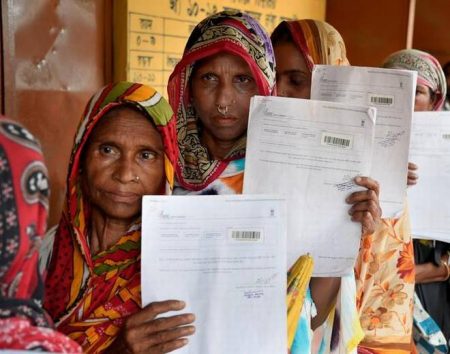Register of Indigenous Inhabitants of Nagaland Government 01/07/2019 – Posted in: Daily News – Tags: Indigenous Peoples, Inner Line Permit
REGISTER OF INDIGENOUS INHABITANTS OF NAGALAND (RIIN)
For: Preliminary & Mains
Topics covered: Indigenous Inhabitants register, Aim, and its importance, Understanding Inner Line Permit
News Flash
The Nagaland government is set to prepare a list of all indigenous inhabitants of the state. The process begins on July 10 and will be completed within 60 days.
Aim
- Register of Indigenous Inhabitants of Nagaland aimed at preparing a master list of all indigenous peoples. It will also be checking the issuance of fake indigenous inhabitant certificates.
- The exercise is being undertaken to stop issuance of the Indigenous Inhabitant Certificate (IIC) to ineligible persons.
Highlights of Register of Indigenous Inhabitants of Nagaland
- The exercise will be conducted through an extensive survey of residents in every village and ward in the state and will be based on existing official records.
- The survey teams have been instructed to visit each house and take into account whether an indigenous inhabitant is residing in his/her permanent residence or has moved elsewhere.
- The permanent and present residences will be listed separately. AADHAR numbers (wherever available) will also be recorded.
- No fresh IICs will be issued once the process is over and only newborns of indigenous inhabitants will be given.
- RIIN will also be integrated with the online system for Inner-Line Permit, a temporary document non-inhabitants are required to possess for entry into and travel in Nagaland.
- Once the data of all residents is compiled, provisional lists of indigenous inhabitants will be published and authenticated by village and ward authorities.
- Thereafter, all indigenous inhabitants will be issued fresh Indigenous Inhabitant Certificate (IIC) and their existing IICs will become invalid.
Significance
If a person is officially recognized as Indigenous Inhabitant of Nagaland he/she can apply for jobs, scholarships and other facilities provided by the Government.
Under the Indian Act, status Indians, also known as registered Indians, may be eligible for a range of benefits, rights, programs and services offered by the federal and provincial or territorial governments.
Indigenous Peoples
Indigenous peoples, also known as first peoples, aboriginal peoples or native peoples, are ethnic groups who are the original settlers of a particular region, in contrast to groups that have settled, occupied or colonized the area more recently.
Inner Line Permit
Inner Line Permit is used by non-Nagas travelling to Nagaland beyond Dimapur. The Line Permit is an official travel document issued by the government of India. It allows Indian citizens to travel into a protected area for a limited period.
- The document is an effort by the government to regulate movement to certain areas located near the international border of India.
- This is an offshoot of the Bengal Eastern Frontier Regulations, 1873.
- The ILP was originally created by the British to safeguard their commercial interests, it continues to be used in India, officially to protect tribal cultures in northeastern India.
- Dimapur, Nagaland’s largest city and port head, was the only place in the state which does not require an ILP, and Indians arriving by air at Dimapur Airport can arrive and stay in the city without one but now Dimapur is also in the process of being included for ILP.
Source: Hindustan Times
You can follow us on LinkedIn and for more updates related to UPSC IAS Preparation, Like our Facebook Page and subscribe our Diligent IAS Youtube Channel
Also, Read Related Daily News
- Jal Shakti Abhiyan to ramp up Rainwater Harvesting
- One nation One Ration Card scheme
- Policy to Regulate Coaching Institutions
- Defence – based Space Research Agency
- Education Quality Upgradation and Inclusion Programme (EQUIP)

